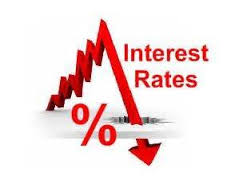On Tuesday 2nd February 2016, the RBA once again left official interest rates on hold. This brought forth the usual chorus on how the economy is stalling or not growing sufficiently and further cuts are required to get it moving and the government and the RBA need to “do something”. The RBA has made it clear that they will take rates lower if they think it necessary.
Hmmm, what’s Einstein’s definition of insanity? Doing the same thing over and over and expecting a different result. Right, so the last dozen plus interest rates haven’t worked at stimulating the economy, so gee, let’s punish the savers a bit more, reward the speculators and gamblers a bit more and CUT INTEREST RATES AGAIN! Maybe it will work THIS time.
Because it’s worked SO well in other countries. Look at Japan, Europe, Switzerland and Sweden with their NIRPs (negative interest rate policies). Look at the rest of the world with their ZIRPs (zero interest rate policies). Their economies are absolutely BOOMING. Oh wait, they’re not…
Even the recent US official interest rate rise of one quarter of one percent by the Federal Reserve Bank is unlikely to be followed by any others in the near future, and could possibly even be wound back. US debt levels, both private and public, are at record levels and because interest rates have been held too low for too long and the market is most likely unable to sustain any further rises.
And let’s not forget the law of diminishing returns, where each subsequent rate cut has a shorter effectiveness duration and smaller impact than the previous one. Let’s also not forget that the current official interest rate is lower than the emergency rate set during the GFC! So does that mean that the economy is now worse than it was during the GFC?
The reasons that the housing Ponzi scheme continues in Australia is partly because of artificially low interest rates (which in a low inflation environment means that real capital gains over the long term are unlikely to eventuate, but that’s another story), partly because our local and state governments are happy to keep the bubble going for as long as possible, but also because savers are getting so hammered by diminishing returns on their savings that they desperately need to find something else that will give them a return or yield that they are no longer getting in cash.
Unfortunately with no currency in the world any longer backed by gold, global economies can only grow if debt is increasing. So central (planners) bankers are keeping interest rates artificially low in order to encourage people to spend, spend, spend ever more, preferably getting into more and more debt in order to do so.
 But because real wages are not rising or are stagnating, people aren’t increasing their spending.
But because real wages are not rising or are stagnating, people aren’t increasing their spending.
It’s one of the reasons China is in so much trouble. China makes “things” that the rest of the world consumes. People aren’t buying so much of these “things” any more. It’s why, for example, the Baltic Dry Shipping Index is down at record lows. China invested huge amounts of (borrowed) money ramping up capacity on their factories. This incidentally greatly benefitted Australia during the GFC with our mining and commodity price boom and went a long way to helping us avoid the downturn that the rest of the world experienced. These factories are now actually operating at much lower capacity or sitting idle because there’s no demand. Look at forward orders for companies like Caterpillar which also tells the same story.
If people aren’t increasing their spending, then it doesn’t matter how low interest rates get. The economy isn’t going to budge. If people aren’t buying, companies have no need to increase capacity or make capital investments. So governments ramp up spending to make up the shortfall, going deeper and deeper into debt. Look at total debt increasing real time on this website www.australiandebtclock.com.au. Many countries have similar debt clocks, such as US – www.usdebtclock.org, UK – www.nationaldebtclock.co.uk and Europe – www.eudebtclock.org to name but a few.
This will all come to a crashing halt in Australia when our public debt is so high (currently low by international standards, but growing faster than any developed country), that Australia loses it’s AAA credit rating and the foreign countries that that currently lend us the money to make up the shortfall in the current account deficit are no longer willing to lend to us.
Our banks also source a significant amount of their loan capital from overseas. Our (slightly) higher interest rates are still attractive to those lending to us, but this will change quickly if our interest rates drop to match the race to the bottom with the rest of the world.
Real interest rates will then rise regardless of what the official RBA rate is. We are going into debt to fund today’s consumption with tomorrow’s income. Income that is not in any way guaranteed.
Ageing demographics of most developed countries are a major factor in the decline of consumption. Baby Boomers are starting to retire. They are spending and investing less and as they retire they are selling assets and taking money out of the market so they can live. Just look at Japan to see how this will end up. They are ahead of many developed countries by 20 years demographically. They are entering their third lost “decade” and have had little to no capital growth since their property and stock markets hit their heights in the mid-1980s, despite the best efforts of their government and central bank.
There are also more and more people wanting and needing welfare, and unwilling to give up any of “their” entitlements (conveniently forgetting that in order for them to receive something, somebody else had to pay it), or actually pay or contribute towards any of it.
That’s another reason government debt is increasing. They cannot or are unwilling to roll back massive commitments in welfare, including their own. We are living well beyond our means as a country, and nobody is prepared to either make or take the hard decisions. We can either make the hard decisions ourselves and live with the consequences, or they will be made for us and we’ll still have to live with the consequences. This will not end well.
This slower growth is how it is likely to be from now on. Welcome to the new normal, Australia!
Here’s another article saying interest rates can rise regardless of the RBA


